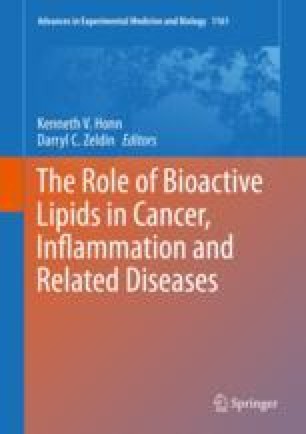 “Understanding how the body regulates pain is fundamental to develop rational strategies to combat the growing prevalence of chronic pain states, opioid dependency, and the increased financial burden to the medical care system.
“Understanding how the body regulates pain is fundamental to develop rational strategies to combat the growing prevalence of chronic pain states, opioid dependency, and the increased financial burden to the medical care system.
Pain is the most prominent reason why Americans seek medical attention and extensive literature has identified the importance of the endocannabinoid pathway in controlling pain. Modulation of the endocannabinoid system offers new therapeutic opportunities for the selective control of excessive neuronal activity in several pain conditions (acute, inflammatory, chronic, and neuropathic).
Cannabinoids have a long history of medicinal use and their analgesic properties are well documented; however, there are major impediments to understanding cannabinoid pain modulation.
One major issue is the presence of psychotropic side effects associated with D9-tetrahydrocannabinol (THC) or synthetic derivatives, which puts an emphatic brake on their use. This dose-limiting effect prevents the appropriate degree of analgesia .
Animal studies have shown that the psychotropic effects are mediated via brain cannabinoid type 1 (CB1) receptors, while analgesic activity in chronic pain states may be mediated via CB1R action in the spinal cord, brainstem, peripheral sensory neurons, or immune cells.
The development of appropriate therapies is incumbent on our understanding of the role of peripheral versus central endocannabinoid-driven analgesia. Recent physiological, pharmacological, and anatomical studies provide evidence that one of the main roles of the endocannabinoid system is the regulation of gamma-aminobutyric acid (GABA) and/or glutamate release.
This article will review this evidence in the context of its implications for pain. We first provide a brief overview of CB1R’s role in the regulation of nociception, followed by a review of the evidence that the peripheral endocannabinoid system modulates nociception.
We then look in detail at regulation of central-mediated analgesia, followed up with evidence that cannabinoid mediated modulation of pain involves modulation of GABAergic and glutamatergic neurotransmission in key brain regions. Finally, we discuss cannabinoid action on non-neuronal cells in the context of inflammation and direct modulation of neurons.
This work stands to reveal long-standing controversies in the cannabinoid analgesia area that have had an impact on failed clinical trials and implementation of therapeutics targeting this system.”
https://www.ncbi.nlm.nih.gov/pubmed/31596190
https://www.tandfonline.com/doi/abs/10.1080/15504263.2019.1668100?journalCode=wjdd20

 “2-Arachidonoyl-glycerol (2-AG) is an
“2-Arachidonoyl-glycerol (2-AG) is an  “Little is known about the endocannabinoid (eCB) system in squamous cell carcinoma of the oral tongue (SCCOT). Here we have investigated, at the mRNA level, expression of genes coding for the components of the eCB system in tumour and non-malignant samples from SCCOT patients. Expression of NAPEPLD and PLA2G4E, coding for eCB anabolic enzymes, was higher in the tumour tissue than in non-malignant tissue. Among genes coding for eCB catabolic enzymes, expression of MGLL was lower in tumour tissue while PTGS2 was increased. It is concluded that the eCB system may be dysfunctional in SCCOT.”
“Little is known about the endocannabinoid (eCB) system in squamous cell carcinoma of the oral tongue (SCCOT). Here we have investigated, at the mRNA level, expression of genes coding for the components of the eCB system in tumour and non-malignant samples from SCCOT patients. Expression of NAPEPLD and PLA2G4E, coding for eCB anabolic enzymes, was higher in the tumour tissue than in non-malignant tissue. Among genes coding for eCB catabolic enzymes, expression of MGLL was lower in tumour tissue while PTGS2 was increased. It is concluded that the eCB system may be dysfunctional in SCCOT.” “The endogenous lipid metabolism network is associated with the occurrence and progression of malignancies.
“The endogenous lipid metabolism network is associated with the occurrence and progression of malignancies. “Evidence has been accumulating regarding alterations in components of the endocannabinoid system in patients with psychosis.
“Evidence has been accumulating regarding alterations in components of the endocannabinoid system in patients with psychosis. “A large body of evidence suggests that dietary n-3 polyunsaturated fatty acids (PUFAs), including eicosapentaenoic acid (EPA) and docosahexaenoic acid (DHA), contribute to a reduced inflammatory tone thereby lowering the risk for several chronic and degenerative diseases. Different mechanisms have been proposed to explain these anti-inflammatory effects, including those involving
“A large body of evidence suggests that dietary n-3 polyunsaturated fatty acids (PUFAs), including eicosapentaenoic acid (EPA) and docosahexaenoic acid (DHA), contribute to a reduced inflammatory tone thereby lowering the risk for several chronic and degenerative diseases. Different mechanisms have been proposed to explain these anti-inflammatory effects, including those involving  “In modern lifestyle, stress and Western diets are two major environmental risk factors involved in the etiology of neuropsychiatric disorders. Lifelong interactions between stress, Western diets, and how they can affect brain physiology, remain unknown.
“In modern lifestyle, stress and Western diets are two major environmental risk factors involved in the etiology of neuropsychiatric disorders. Lifelong interactions between stress, Western diets, and how they can affect brain physiology, remain unknown. “Accumulating evidence suggests that diets rich in ω-3 polyunsaturated fatty acids (PUFAs) offer protection against vascular inflammation, neuroinflammation, hypertension, and thrombosis.
“Accumulating evidence suggests that diets rich in ω-3 polyunsaturated fatty acids (PUFAs) offer protection against vascular inflammation, neuroinflammation, hypertension, and thrombosis.
 “The endocannabinoid system has been found to be pervasive in mammalian species. It has also been described in invertebrate species as primitive as the Hydra. Insects, apparently, are devoid of this, otherwise, ubiquitous system that provides homeostatic balance to the nervous and immune systems, as well as many other organ systems.
“The endocannabinoid system has been found to be pervasive in mammalian species. It has also been described in invertebrate species as primitive as the Hydra. Insects, apparently, are devoid of this, otherwise, ubiquitous system that provides homeostatic balance to the nervous and immune systems, as well as many other organ systems.